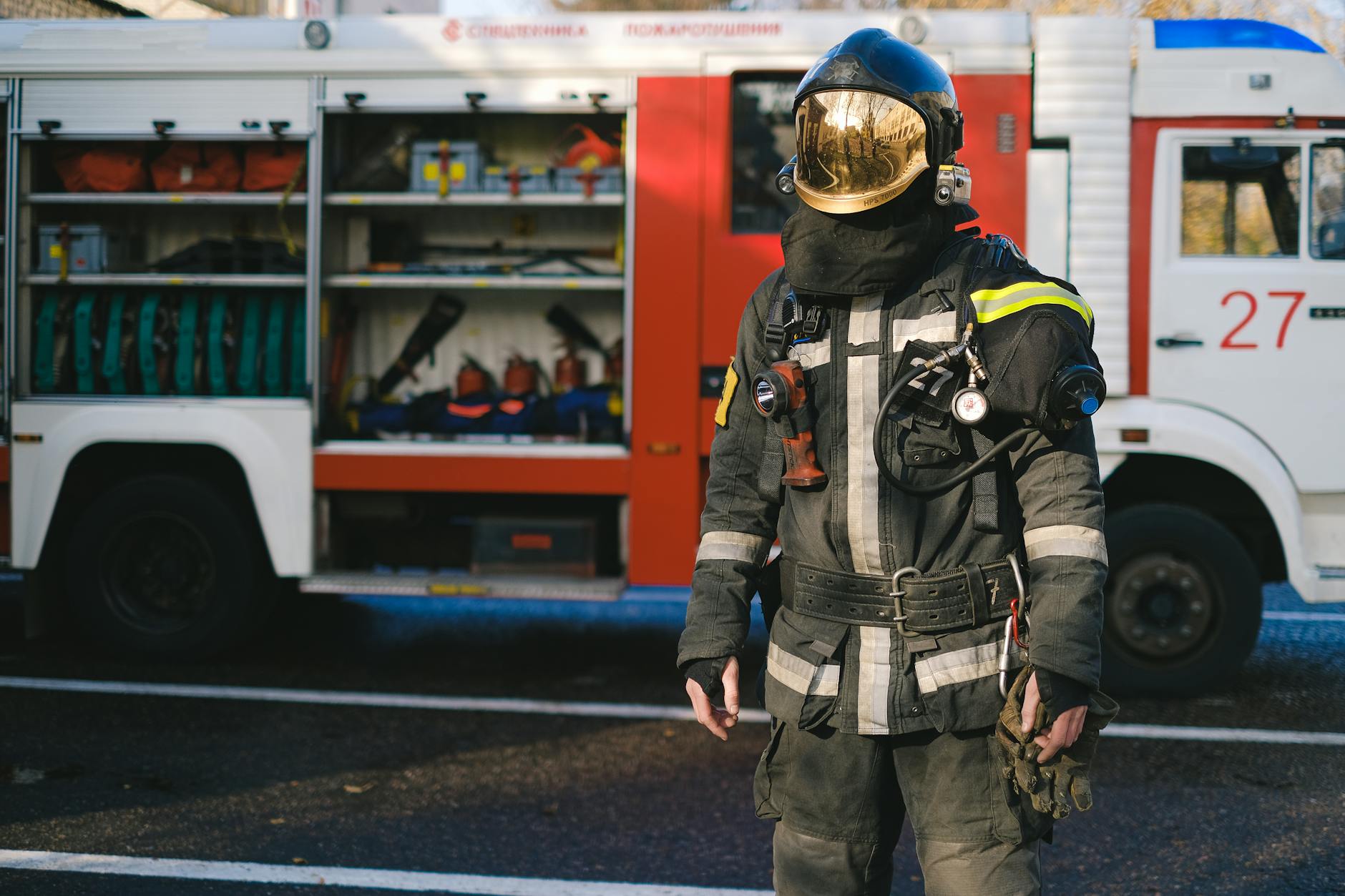
Fire Safety and Emergency Preparedness
Introduction
Fire safety and emergency preparedness are crucial aspects of protecting lives, property, and the environment. Fires can occur unexpectedly and cause devastating damage if not managed properly. Understanding fire hazards, prevention techniques, and emergency response procedures helps individuals and organizations minimize risks and respond effectively to emergencies.
Understanding Fire: The Fire Triangle
The fire triangle consists of three elements: heat, fuel, and oxygen. For a fire to ignite and sustain, all three elements must be present. Removing any one of these elements will extinguish the fire.
- Heat: The energy source that initiates combustion.
- Fuel: Any combustible material that can burn.
- Oxygen: Supports the combustion process, typically from the surrounding air.
Understanding the fire triangle helps in fire prevention by controlling one or more of these elements.
Common Causes of Fires
Fires can start from various sources, often due to human error, negligence, or equipment malfunction. Common causes include:
- Electrical faults: Overloaded circuits, damaged wiring, and faulty appliances.
- Cooking equipment: Unattended cooking and grease fires.
- Heating equipment: Portable heaters, fireplaces, and boilers.
- Smoking materials: Cigarettes, matches, and lighters.
- Flammable liquids and gases: Improper storage and handling.
- Arson: Deliberate fire-setting.
Fire Prevention Strategies
Fire prevention involves proactive measures to reduce fire risks. Essential strategies include:
- Regular maintenance: Inspect and maintain electrical systems, heating equipment, and appliances.
- Safe storage: Store flammable materials in appropriate containers and locations.
- Workplace safety protocols: Implement fire safety training and establish fire prevention policies.
- Public awareness: Educate individuals on fire hazards and prevention techniques.
- Fire-resistant materials: Use fire-resistant construction materials where possible.
Fire Detection Systems
Early fire detection is critical to preventing the spread of fire. Detection systems include:
- Smoke detectors: Detect smoke particles and trigger alarms.
- Heat detectors: Respond to significant temperature changes.
- Flame detectors: Identify the presence of flames using infrared or ultraviolet sensors.
- Gas detectors: Monitor levels of combustible gases.
Regular testing and maintenance ensure these systems function effectively.
Fire Suppression Equipment
Fire suppression equipment helps control or extinguish fires. Common equipment includes:
- Fire extinguishers: Portable devices classified by the type of fire they extinguish (Class A, B, C, D, and K).
- Fire sprinklers: Automatic systems that release water when heat is detected.
- Fire blankets: Used to smother small fires, particularly in kitchens.
- Hose reels and hydrants: Provide water for firefighting operations.
Knowing how to use these tools correctly is essential for effective fire response.
Fire Safety Training and Drills
Training and drills prepare individuals to respond effectively to fire emergencies. Key components include:
- Fire extinguisher training: Teaching the PASS technique (Pull, Aim, Squeeze, Sweep).
- Evacuation drills: Regularly practicing evacuation procedures to ensure quick and orderly exits.
- Emergency response team training: Preparing designated personnel to lead responses during emergencies.
- Stop, Drop, and Roll technique: Educating individuals on how to respond if their clothing catches fire.
Evacuation Procedures and Plans
A well-defined evacuation plan ensures safe and efficient evacuation during a fire emergency. Essential elements include:
- Clear exit routes: Marked, unobstructed, and well-lit escape paths.
- Designated assembly points: Safe locations for gathering after evacuation.
- Roles and responsibilities: Assigning tasks like guiding evacuees, conducting headcounts, and communicating with emergency services.
- Accessibility considerations: Ensuring evacuation procedures accommodate individuals with disabilities.
Emergency Preparedness and Response
Emergency preparedness involves planning and preparing for potential fire incidents. Steps include:
- Risk assessment: Identifying fire hazards and assessing their potential impact.
- Emergency response plan (ERP): Documenting procedures for responding to fires.
- Communication systems: Establishing methods for alerting occupants and contacting emergency services.
- Resource availability: Ensuring access to firefighting equipment and medical supplies.
Role of Fire Safety Officers
Fire safety officers play a vital role in maintaining fire safety standards. Their responsibilities include:
- Conducting inspections: Regularly inspecting facilities for fire hazards.
- Developing safety plans: Creating fire prevention and response plans.
- Training personnel: Educating staff on fire safety practices.
- Coordinating with emergency services: Collaborating with fire departments and other agencies.
Fire Safety in Different Environments
Fire safety requirements vary across different environments:
- Residential buildings: Focus on smoke detectors, escape plans, and safe cooking practices.
- Commercial properties: Emphasize fire detection systems, evacuation procedures, and staff training.
- Industrial sites: Require specialized equipment and protocols for handling hazardous materials.
- Public venues: Must accommodate large crowds with clear signage and multiple exits.
Legal and Regulatory Compliance
Adhering to fire safety regulations helps protect lives and property. Key components include:
- Building codes: Regulations governing fire-resistant materials and safety systems.
- Occupational safety standards: Guidelines for workplace fire safety.
- Inspection requirements: Mandatory inspections to ensure compliance.
- Training mandates: Requirements for regular fire safety training and drills.
The Importance of Community Involvement
Community participation enhances fire safety on a broader scale. Activities include:
- Public education programs: Raising awareness about fire prevention.
- Community drills: Conducting neighborhood-wide evacuation exercises.
- Collaboration with emergency services: Partnering with local fire departments for training and resources.
Technological Advances in Fire Safety
Technology continues to improve fire safety and emergency preparedness. Innovations include:
- Smart detection systems: Devices that integrate with home automation systems.
- Firefighting robots: Remote-controlled robots for high-risk situations.
- Advanced suppression agents: Environmentally friendly extinguishing agents.
- Predictive analytics: Software that identifies potential fire risks based on historical data.
Conclusion
Fire safety and emergency preparedness require a combination of knowledge, planning, and proactive measures. By understanding fire behavior, implementing prevention strategies, and preparing for emergencies, individuals and organizations can significantly reduce the risks associated with fire incidents. Regular training, community involvement, and the adoption of modern technologies further enhance safety and resilience in the face of fire-related emergencies.
Movie Review: Agni (Fire Fighter, Fire Officer and Fireman) – Every Fireman Must watch
How Does a Fire Extinguisher Work? | Free Download PPT
Top 10 Fire Safety Tips Everyone Should Know